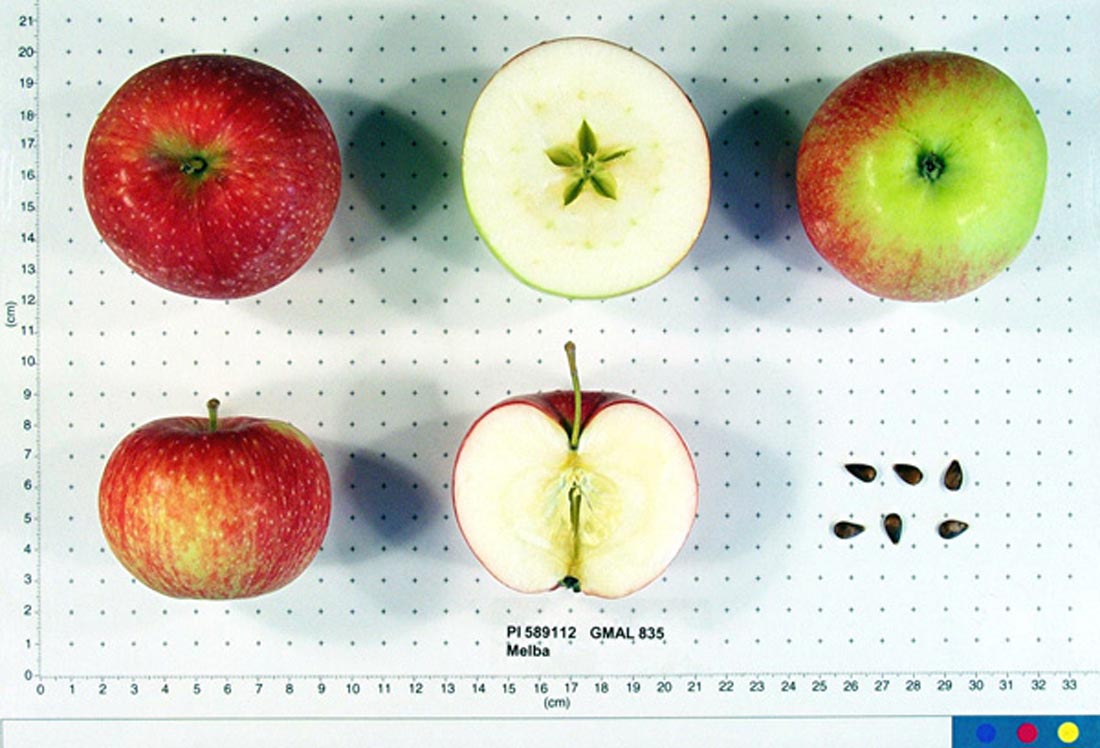Pomiferous
Welcome to the world's most extensive apples (pommes) database.
Information on over 7,000 apples is available here, all carefully researched and provided in a way that is easy to navigate.
Melba

type: Cooking, Dessert, Juice
identification: Medium, round to slightly conic. Ribbed and crowned. Thick skin is pale yellow over with are pale red flushes and dark red stripes. Sparsely marked with indistinct, light-coloured lenticels. The calyx is small and open, set in a narrow and moderately shallow basin which is often ribbed. The stem is short and stout, set in a moderately deep and wide cavity. Develops a fine bloom on the skin when almost ripe.
characteristics: The flesh is white, tender and melting. Juicy, sweet, slightly tart, with aromas of strawberry.
uses: A good late-summer dessert apple, also used for cooking and juice.
origins: Developed from an open-pollinated McIntosh in 1898 by William T. Macoun at the Central Experiment Farm near Ottawa, Ontario (Canada). The pollen parent is believed to have been Livland Raspberry . Released in 1924.
cultivation: Hardy, moderately vigorous, upright spreading tree. Bears fruit on spurs. Starts to produce as a young tree, but has a tendency to become biennial. Needs warm summers to ripen, though unseasonably warm weather during final ripening tends to soften the apple to make it less than palatable. Blossoms can tolerate late frosts.
cold storage: Will keep only a couple of weeks in cold storage.
vulnerabilities: Slightly prone to canker but resistant to scab and apple rust.
harvest: Ready for harvest in the middle of the fourth period but must be picked over several sessions because the apples ripen at different times. Fruit drops when ripe.
pollination group: C
pollination peak: 8
ploidism: Diploid. Self sterile.
harvest period: 4
Donate a cider?
©2016-2021 Pomiferous.com. All rights reserved